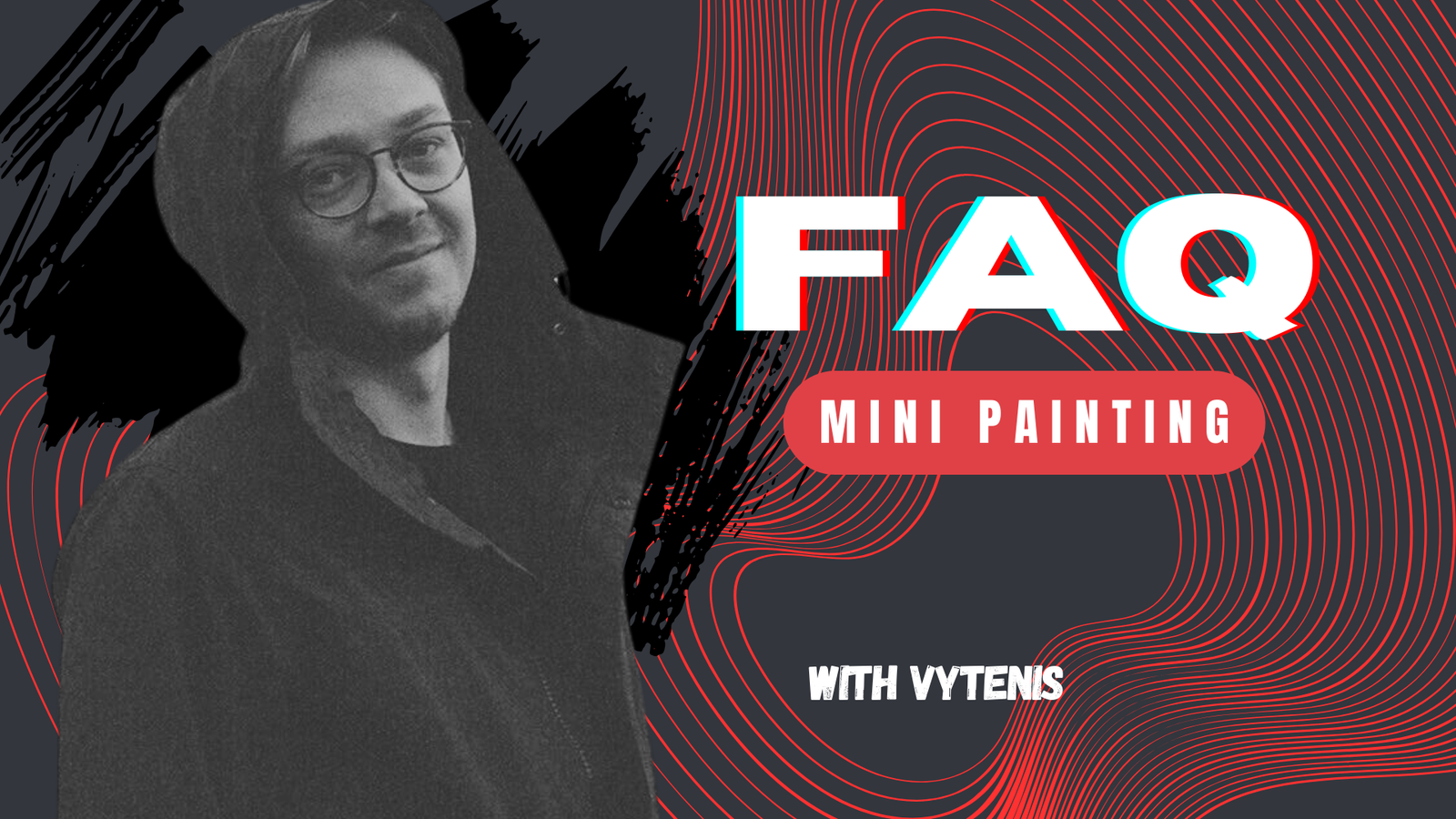- What are the essential tools I need for assembling and painting my miniatures?
For assembly, you need good sharp clippers, a hobby knife, some files or other tools to remove mold lines, and some glue. Plastic glue is great for plastic as it welds the mini together, but superglue has some uses as well. A hobby drill can be useful but is not needed in the beginning.
You need a couple of brushes, a mug of water, some paint pots (really, 8-10 is probably enough when you start out), and a palette. A sheet of plastic serves as a good enough palette in the beginning. Later on, you might want to consider making or buying a wet palette.
- How do I choose the right brushes for miniature painting?
I would suggest trying out several types of brushes (natural/synthetic in different sizes) to learn what works best for you.
I like to paint with natural hair sable brushes, with rather long hairs. I really use just two sizes as long as they have sharp tips (1 and 3 Windsor sizes). A longer brush means it can hold more paint, it dries out less quickly. Although the downside is that good natural brushes are more expensive and can be sensitive to some types of paint, they last ages if you use them properly. I keep some old brushes for heavy-duty tasks, as well as some makeup brushes for dry brushing.
- What type of paint is best for painting miniatures? Can I mix different brands of paint for my miniatures?
Several brands make acrylic paints for minis, most of which are good. However, I tend to stick mostly to GW paints. With experience, you can try other brands and types of paints like oil paints, inks, etc.
- How do I prepare my miniatures before painting them?
For plastic minis, you don’t need to do anything apart from assembling and priming them with a spray can. Resin minis beforehand need a soap bath to remove the oily residue that prevents paint from sticking.
- How do I choose a color scheme for my miniature?
Look for inspiration in the army books or social media, there is now plenty of content to draw inspiration from. Find something you like, find a tutorial for that, and try to copy it. Or if you have an idea, go for it — paint a test mini to see how it looks.
- What techniques can I use to add details to my miniatures? (base coat, washes, dry brushing, edge highlighting)
The possibilities are endless. The basic idea is that you need a base layer of color a shadow, and a highlight, yet there are many ways to accomplish that. You can go with contrast paint that tries to do it all with one coat.
A classic way of a basecoat of a solid color, a thin wash, and then an edge highlight. Or try a quick drybrush to catch raised areas. Maybe you are adventurous and want to try some glazing and wet blending.
- How do I fix mistakes or paint over an area on my miniature?
If you are quick, you can wipe it off with your finger :D it depends on the scale of a mistake, sometimes you don’t need to fix it at all because the area will be later covered with a highlight or shadow, and sometimes you need to come back with the previous color and cover it up.
- How do I protect my painted miniatures with varnish?
I typically don’t, but there are spray can varnishes to spray your minis with a protective layer.
- Can you recommend any resources and inspiration for learning miniature painting techniques?
There are endless tutorials on YouTube for all kinds of skill levels and techniques, so exploring there will surely give you all the advice you need.


